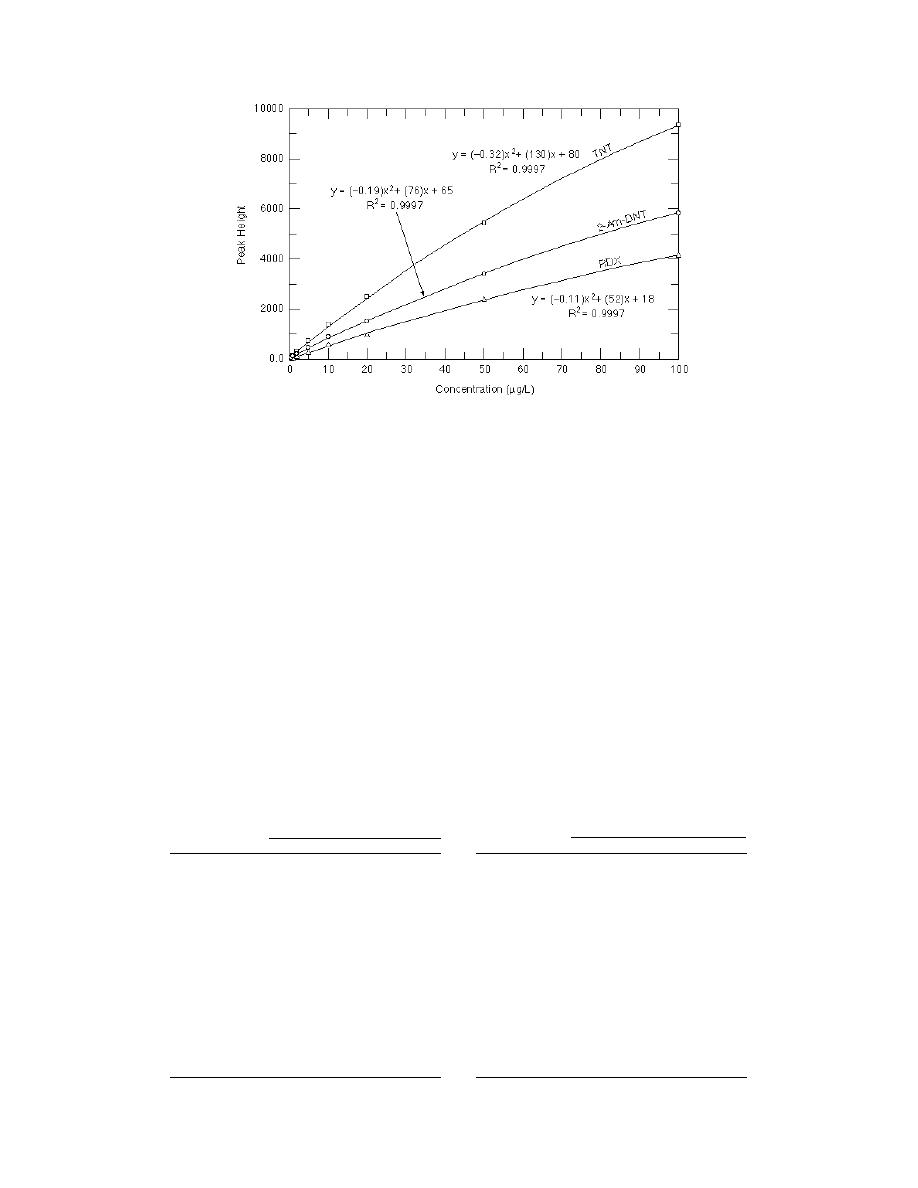
TNB, TNT, and tetryl were unstable when left at
potentially sit in an autosampler for several
room temperature in amber autosampler vials.
hours in close proximity to a heated injection port
Previous stability studies had shown that these
and GC oven vent. The autosampler we used (HP
analytes were stable for several days in acetoni-
6890) was designed so that a coolant could be cir-
trile (Jenkins et al. 1988). However, the standards
culated through the tray containing the sample
in this previous study were much higher in con-
vials. With this modification, the standards were
centration (3 mg/L). We found that analyte loss
stable over a typical 12-hour analytical shift. The
was most noticeable at the lower concentrations
solid-phase extracts of water samples did not
(50 g/L vs. 500 g/L), that the loss differed with
exhibit instability, which led us to suspect that
different brands of acetonitrile (Table 8), and was
residual water from the SPE might stabilize the
slowed by refrigeration of the solution (Fig. 5).
extracts. However, experiments to establish a link
The decreases in concentrations of TNB and TNT
between analyte stability and moisture in the ace-
were confirmed by HPLC to ascertain that the loss
tonitrile were inconclusive.
was not associated with GC analysis (Table 9).
Only the trinitroaromatics exhibited this instabil-
Residual water in acetonitrile
ity. We were particularly concerned about this in-
Solid-phase extracts will inevitably contain
stability because samples and standards could
some water. For mid- to nonpolar elution sol-
at room temperature and prepared with two brands of acetonitrile.
Days at
Peak ht/day 0 peak ht
Days at
Peak ht/day 0 peak ht
room temp
Baker AcN Sigma Aldrich AcN
room temp
Baker AcN Sigma Aldrich AcN
b. Higher concentration
a. Lower concentration
TNB (500 g/L)
TNB (50 g/L)
0
1
1
0
1
1
1
0.97
1.00
1
0
0.91
4
0.95
0.97
4
0
0.86
TNT (500 g/L)
TNT (50 g/L)
0
1
1
0
1
1
1
0.89
0.93
1
0.30
0.70
4
0.81
0.83
4
0.20
0.45
RDX (1000 g/L)
RDX (100 g/L)
0
1
1
0
1
1
1
1.03
1.06
1
0.99
1.08
4
1.05
1.05
4
1.16
1.08
10



 Previous Page
Previous Page
